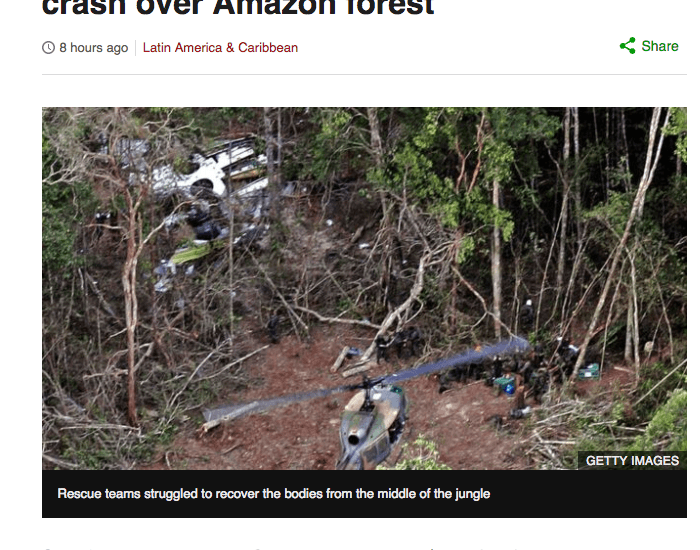Brazil tribe gets compensation from 2006 airplane crash

There are 12 principle areas to manage when responding to a crisis. The eighth principle area focuses on “Community and Government Affairs.” When I talk about this, I tell people the story of working in Angola in 2005. I was there with a team to try and recover what we could from the wreckage of two aircraft, both shot down in the later stages of the Angola Civil war. We not only had authority, but also great cooperation from the government officials and could begin at any time. However, the real permission and cooperation we wanted was from the local indigenous leaders. So before starting any work I met with and asked the local chief for his permission to disturb the land and to take any human remains we recovered from the site away. I explained the purpose and what we hoped to accomplish (complete accountability and identification of those on board). I also asked about how we should leave the land, given that this crash had occurred almost 5 years previously. Not only did he give his approval and support for our operation, he provided the very useful information about areas that although had been declared cleared of landmines, were still occasionally yielding them.
I saw today that the indigenous Caiapó tribe in Brazil and Brazilian Airline GOL came to an out-of-court settlement for $1.3 million US dollars in compensation. This is for the damage done to the Caiapó land following the tragic midair collision in 2006 between a GOL 737 and ExcelAire Embraer in which all 154 people on board were killed. http://www.bbc.co.uk/news/world-latin-america-39413074#
The Caiapó noted that their land had been polluted and cursed with the presence of the dead. Given the crash occurred in 2006 and a settlement was reached over 10 years later suggest either a prolonged legal fight, or the Caiapó were initially unaware they could claim compensation.
So, my point is this, crisis – especially sudden events like air or sea disasters affect many different groups of people – those on board the aircraft or vessel, their families, the companies (employees) involved to name just a few. They also affect those in the immediate area of the incident. Your response plan, and that of your insurer, should consider their needs, be proactive in approaching them and learning what they feel has been damaged, and address those concerns as soon as possible.
Not only is it the right way to do business, it is also a more cost-effective way. The amount of damage is not the real dispute; it is the recognition of the damage, and validation of the loss. Prolonged litigation, doesn’t reduce the damages. Quite the opposite when you consider the cost and fees associated with litigation. There is also of course the continued damage to the brand. For the families, the real cost is that event can never be undone.
